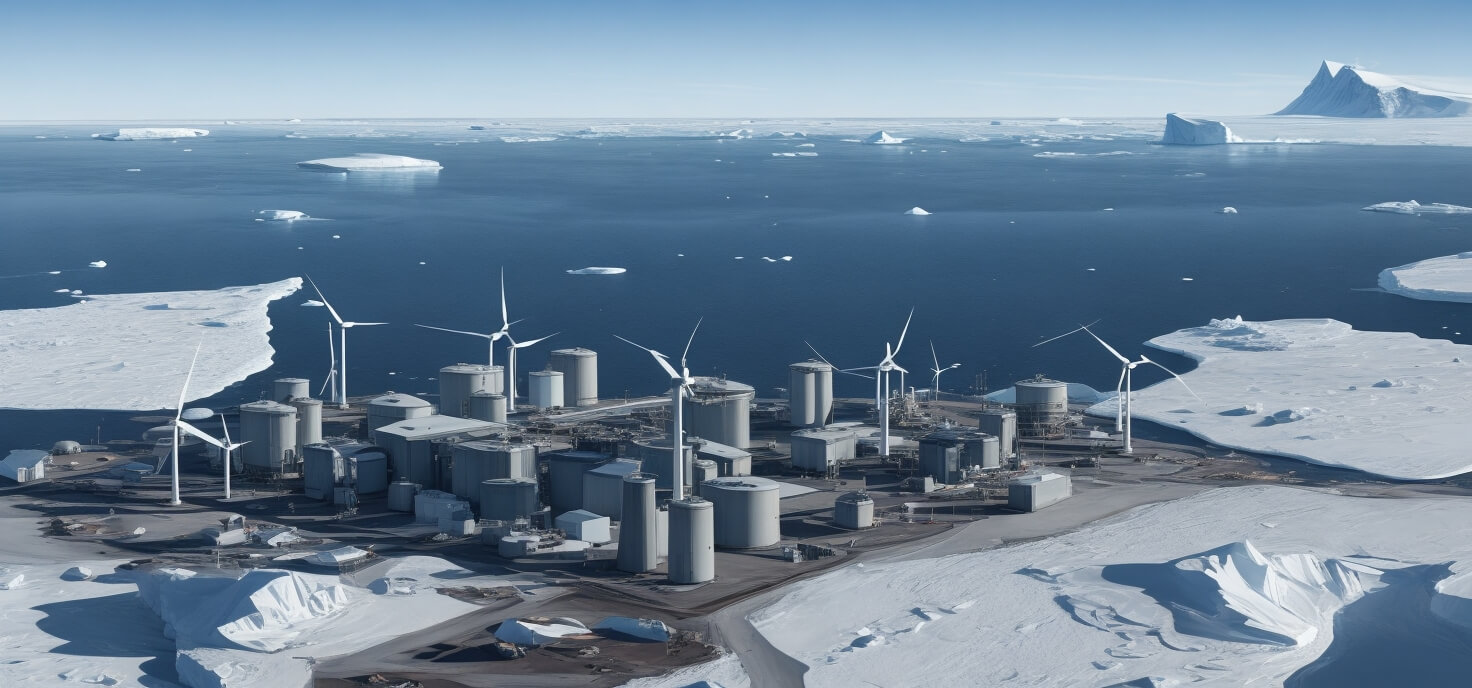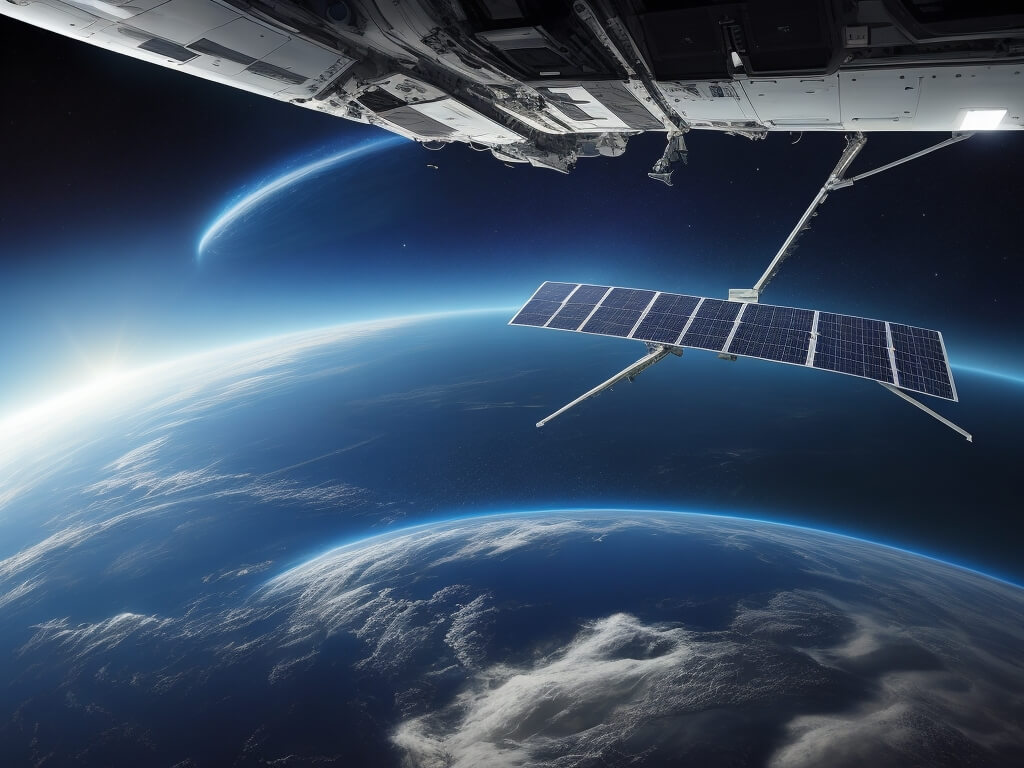Renewable energy is rapidly becoming the cornerstone of our efforts to combat climate change and reduce our dependence on fossil fuels. Its importance extends beyond our terrestrial boundaries and reaches into the most extreme environments on Earth and beyond — Antarctica and outer space. In this article, we’ll delve into the fascinating world of renewable energy solutions in these challenging settings, exploring the innovative technologies that are paving the way for sustainable power generation.
Renewable Energy in Antarctica

Renewable energy solutions have made remarkable progress in the challenging setting of Antarctica. As the Earth’s coldest and most isolated continent, Antarctica might seem an unlikely candidate for sustainable power generation. Still, innovative technologies have allowed researchers and expeditions to harness the power of the sun through strategically placed solar panels. These panels provide electricity for lighting, heating, and essential scientific instruments during the sunlit summer months. Additionally, wind turbines specially designed to withstand the harsh conditions of the region capture wind energy, while geothermal systems, tapping into the Earth’s natural heat, provide a reliable source of power during the dark and frigid winters, making sustainable energy a huge part of research efforts in Antarctica.
Solar Power
Solar power has emerged as a game-changing solution for Antarctic research stations, leveraging the abundant sunlight available during the summer months. To harness this precious resource, solar panels are strategically positioned to capture sunlight and convert it into electricity, serving a variety of critical purposes such as lighting, heating, and powering scientific instruments. These solar energy systems not only prove efficient it also demonstrate their eco-friendly credentials by helping researchers reduce their carbon footprint in the environmentally sensitive Antarctic region. In this remote and extreme environment, solar power is a beacon of sustainable energy, enabling vital research activities while minimizing the impact on the fragile ecosystem.
Wind Energy
Antarctica has witnessed remarkable progress in wind energy solutions. Specially designed wind turbines have demonstrated their resilience in the face of extreme cold and powerful winds prevalent in the region. These turbines have emerged as dependable sources of electricity for remote research stations, ensuring a continuous power supply even in the most challenging conditions. They play a critical role in bridging energy gaps during the long, dark winter months when sunlight is in short supply. Wind energy, alongside solar power, contributes significantly to sustainable energy generation in Antarctica, allowing researchers to carry out their vital work in this austere and demanding environment.
Geothermal Energy
Geothermal energy serves as a valuable alternative for powering Antarctic research stations. This renewable source derives its energy from the Earth’s heat beneath the surface, offering a consistent and reliable power supply. Researchers achieve this by tapping into natural hot springs or drilling into the Earth’s crust to access the geothermal resource. This technology proves particularly indispensable during the harsh Antarctic winters when solar and wind energy production faces limitations due to the extended periods of darkness and extreme weather conditions. Geothermal systems contribute to a diversified and sustainable energy mix in Antarctica, ensuring that research stations can maintain their operations, even in the most unforgiving conditions.
Renewable Energy in Space Exploration

In space exploration, where adversity meets ambition, innovative renewable energy solutions have become the backbone of mission sustainability and scientific discovery. The unforgiving conditions of space demand unconventional power sources to fuel spacecraft and space stations. Solar panels are prevalent, capturing the Sun’s energy to generate electricity efficiently and reliably, with specialized designs to withstand the harsh cosmic environment. For missions in more distant frontiers, like those voyaging to the outer planets or interstellar space, Radioisotope Thermoelectric Generators (RTGs) harness the heat from radioactive decay to power spacecraft, exemplified by the Voyager probes. As we contemplate establishing human bases on the Moon and Mars, renewable energy solutions will be fundamental, including solar power and in-situ resource utilization (ISRU) to tap into local resources, reducing reliance on Earth for energy and marking an exciting chapter in space exploration.
Solar Panels in Space
Solar panels are the primary source of renewable energy in space exploration. These vital components, installed on spacecraft and space stations, harness the Sun’s energy and convert it into electricity. Highly efficient, lightweight, and meticulously designed to endure the formidable conditions of outer space, these solar panels ensure a steady and dependable power supply for a multitude of space missions. Their capability to perform consistently in the challenging environment of space makes them indispensable for powering the equipment, instruments, and systems necessary for scientific discovery, communication, and the success of missions exploring our cosmos.
Radioisotope Thermoelectric Generators (RTGs)
In more distant missions, where solar power is insufficient, such as those exploring the outer planets or interstellar space, Radioisotope Thermoelectric Generators (RTGs) come into play. RTGs use the heat generated by the natural radioactive decay of isotopes to produce electricity. These compact and long-lasting power sources have powered spacecraft like the Voyager probes, which have traveled far beyond our solar system.
Moon and Mars Bases
The prospect of creating human bases on the Moon and Mars underscores the growing importance of sustainable energy sources. Solar power and cutting-edge technologies like in-situ resource utilization (ISRU) will play key roles in these extraterrestrial settlements. ISRU focuses on extracting and harnessing local resources to generate energy, significantly lessening the dependency on transporting heavy payloads from Earth. For instance, on the Moon, lunar regolith can be processed to yield oxygen and other essential resources. These resources serve multiple functions, such as supporting life systems and facilitating energy generation, marking a significant stride toward self-sufficiency and sustainability in our lunar and Martian endeavors.
Future Prospects
While renewable energy has made significant strides in both Antarctica and space exploration, there remain formidable challenges to be addressed. In Antarctica, the harsh climate, extreme cold, and prolonged periods of darkness during the winter months present limitations for solar and wind energy production. In space, the immense distances from the Sun and the necessity for power generation in high-radiation environments create their unique obstacles.
In response to these challenges, ongoing research and innovation are essential. Scientists and engineers are tirelessly working to develop advanced energy storage systems that can store excess energy during the abundant summer months in Antarctica for use during the dark winter. Similarly, improved solar panel technology continues to be a focus, with advancements aimed at enhancing efficiency and durability to ensure continuous power supply.
In space exploration, nuclear power systems hold significant promise. Fission and fusion reactors are on the horizon, offering the potential for extended-duration missions deep into the cosmos. Fission reactors, like those used in nuclear submarines, have the advantage of providing substantial power output and can operate for years. Fusion, a technology still under development, has the potential to revolutionize space travel by offering virtually limitless and sustainable energy through nuclear fusion, the same process that powers the Sun.
Renewable energy in extreme environments, whether on Earth in Antarctica or in the demanding conditions of outer space, represents a remarkable feat of human ingenuity. The challenges encountered have spurred continuous research and innovation, which, in turn, drive the evolution of technology in both domains. As we push the boundaries of sustainable energy solutions, we move closer to a future where humankind can thrive and explore even the harshest and most distant frontiers while minimizing our impact on the environment. These endeavors exemplify our unwavering commitment to a greener and more sustainable world.

